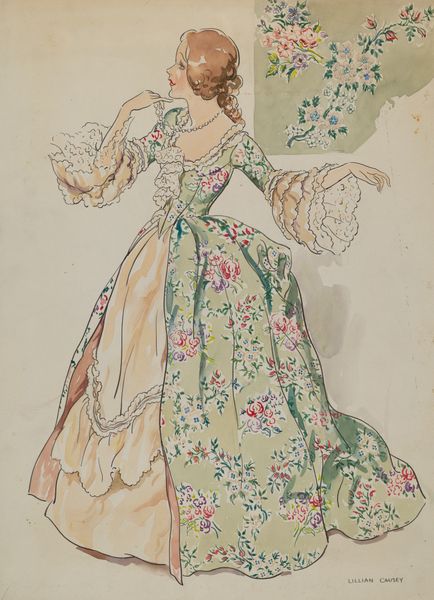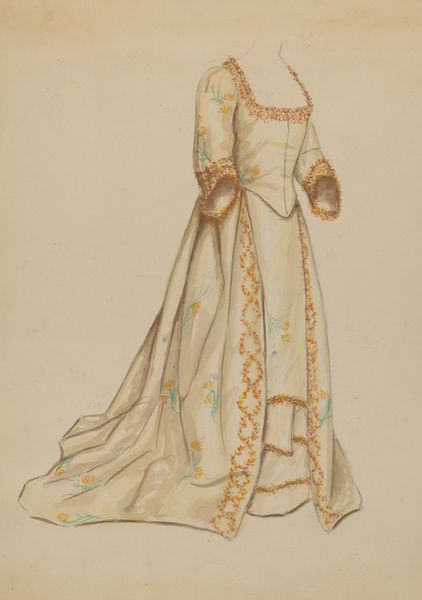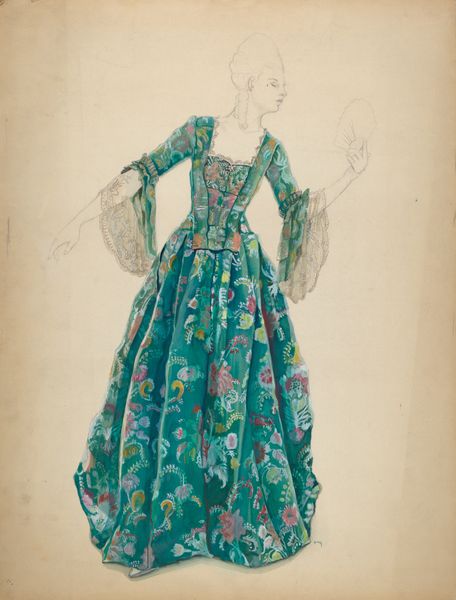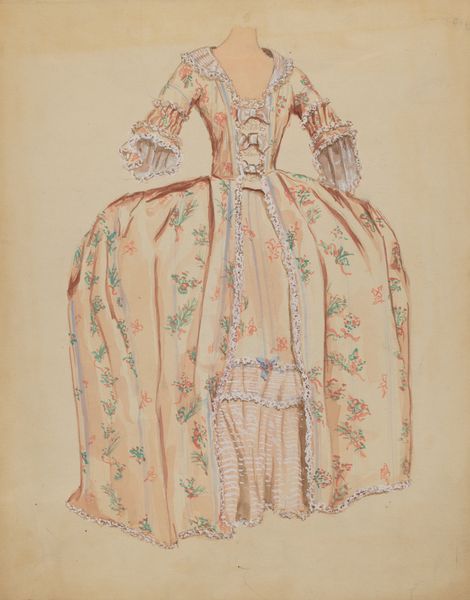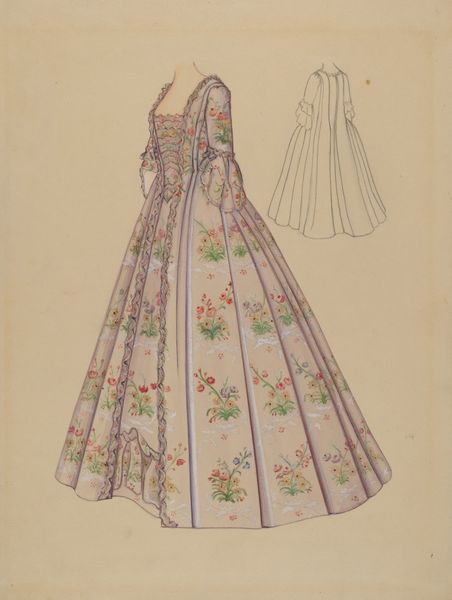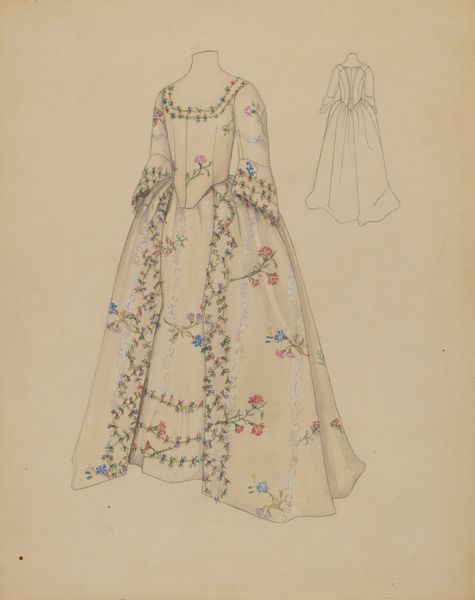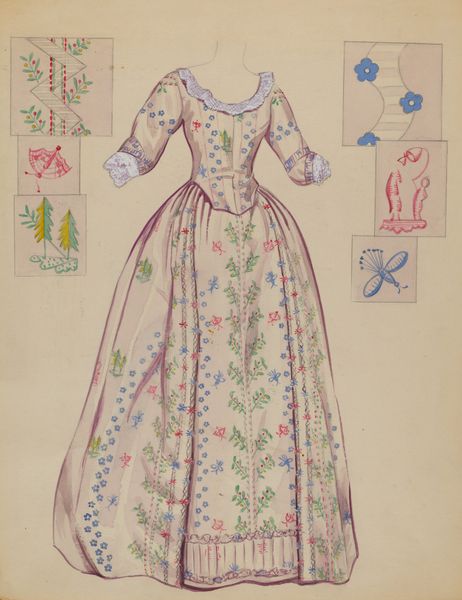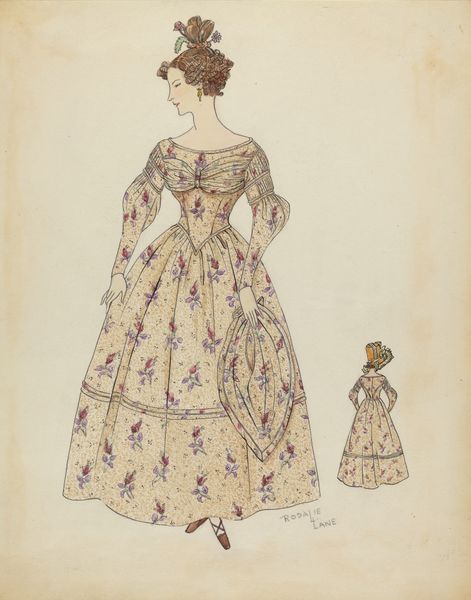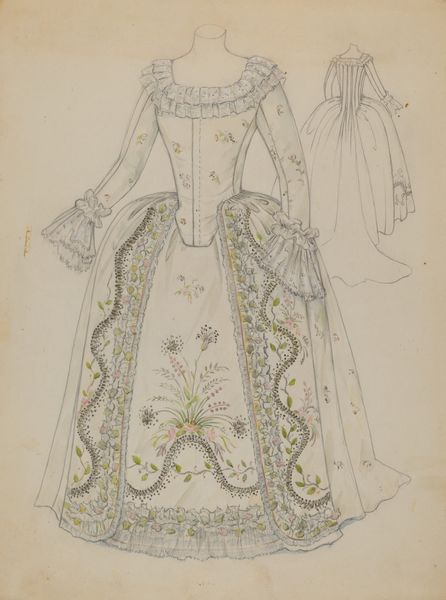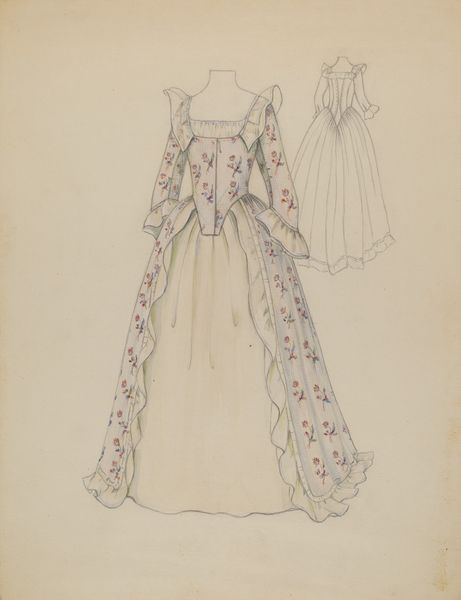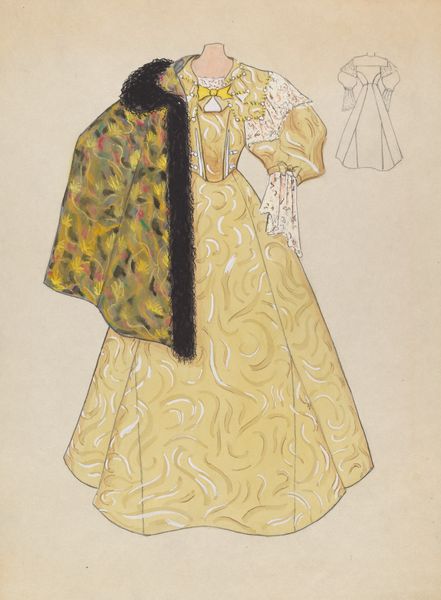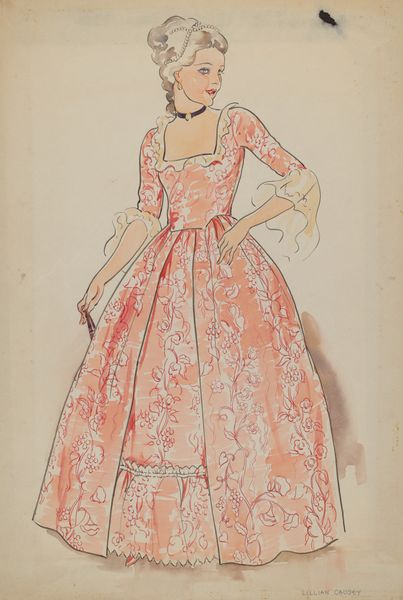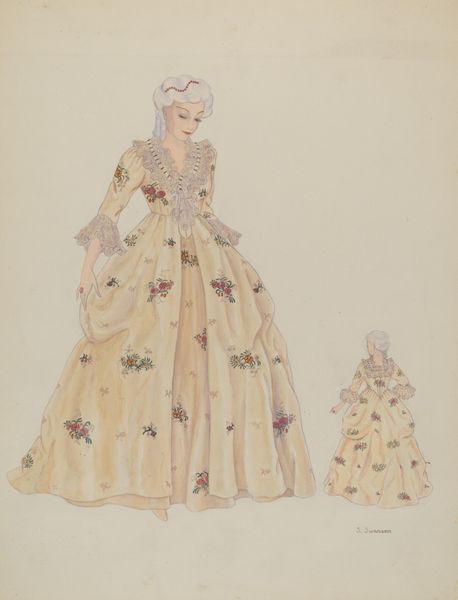
drawing, coloured-pencil, watercolor
#
portrait
#
drawing
#
coloured-pencil
#
water colours
#
figuration
#
watercolor
#
intimism
#
coloured pencil
#
genre-painting
Dimensions: overall: 35.7 x 26.7 cm (14 1/16 x 10 1/2 in.)
Copyright: National Gallery of Art: CC0 1.0
Curator: Looking at Lillian Causey’s “Dress” from around 1936, what immediately strikes you? Editor: Well, it’s undeniably charming, with a delicate, almost whimsical feel. The colors are muted, the lines soft… it evokes a sense of quiet elegance. It also looks like a costume of some sort, or is it an actual period dress? Curator: That’s perceptive of you. I find this intriguing as well because of the social circumstances in which it was created. We have here an illustration of an actual eighteenth-century French court dress as opposed to an item for daily usage. During this time period the U.S. suffered deeply due to the Great Depression, yet it displays an explicit consumption of old aristocratic symbols. Editor: Ah, that brings up a crucial tension. This embrace of opulent imagery during widespread economic hardship is jarring. It's like a visual manifestation of class disparity. Was this for fashion illustration, maybe catering to a wealthy clientele still able to indulge? Curator: Most likely. Examining this drawing, note the artist's skillful handling of watercolor and colored pencil. The floral patterns on the dress are intricate, and yet they don't overwhelm the overall composition. Notice, as well, how it is a sketch rather than a portrait that elevates the social standing of an important figure. Rather, it idealizes clothing at a specific moment in time. Editor: It’s an intriguing juxtaposition of historical reference and modern interpretation, especially if it's used as fashion advertising, offering aspiration alongside accessible artistic charm. Is there much known about Lillian Causey and her context for these costume designs? Curator: Causey seemed primarily focused on illustrating fashion for periodicals and possibly stage costumes during the Depression era. She represents an era when a knowledge of European fashion was an advantage to dress-making. Editor: A complex little piece then, reflecting economic contrasts alongside artistry. Curator: Indeed. And maybe also our enduring fascination with bygone eras and idealized versions of history.
Comments
No comments
Be the first to comment and join the conversation on the ultimate creative platform.
